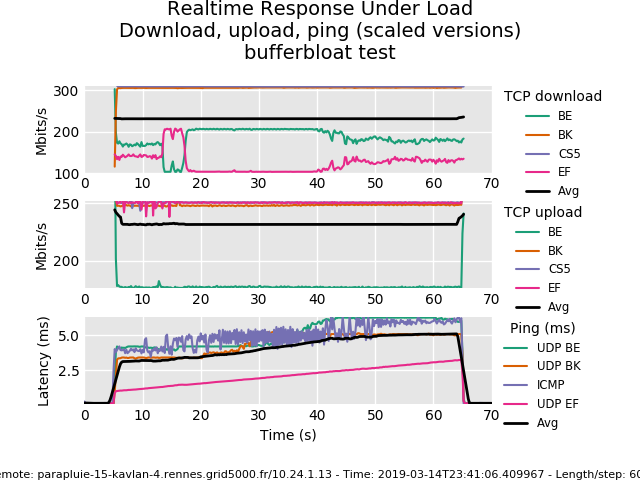-
SIMONIN Matthieu authoredSIMONIN Matthieu authored
🚀 EnOSlib primer
Let's consider a user called Alice or Bob.
{{ user }} would like to start a network benchmark between the nodes of an infrastructure. {{ user }} chooses to go with flent and prototypes all the thing on the local machine using Vagrant.
Using Vagrant
This starts {{ user }}'s experiment on the local machine using Vagrant (with
libvirt). Note that a {{ user }}'s friend will be able to run the same using
backend="virtualbox" if VirtualBox is installed. Now
looking at the result directory created at the end of the execution, {{ user }}
finds:

{{ user }} launches several times the script, getting new results. Subsequent runs are faster because the machines are already up and everything is idempotent.
Moving to Grid'5000
{{ user }} now would like to go in a real testbed (e.g Grid'5000). Good news ! {{ user }} only have to adapt the configuration phase and the provider used in the script. The experimentation logic can remain the same. Thus, one can write the following:

Going further
Now where {{ user }} can go from here depends on the needs:
- Moving to another provider is possible. {{ user }} only needs to learn about the specific object for this configuration -- e.g see :ref:`[1a] <vmong5k>`, :ref:`[1b] <distem>`.
- Refactoring the code, providing a command line interface could be also nice. After all its just python code -- see :ref:`[2] <tasks>`. Or moving the deployment code (because it becomes large) into separated Ansible files -- see :ref:`[3] <integration-with-ansible>`.
- Applying specific network constraints between the nodes of the reservation is also possible. {{ user }}'ll need to learn more about how enforcing the constraints -- see :ref:`[4] <netem>`.
- Deploying a monitoring stack can be convenient to track some system metrics. |enoslib| offers some services that can be used easily -- see :ref:`[5] <monitoring>` or :ref:`[6] <skydive>`.